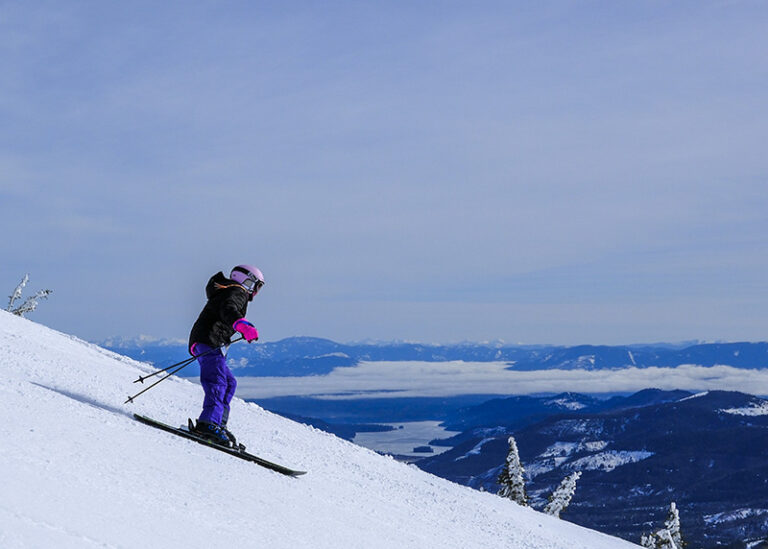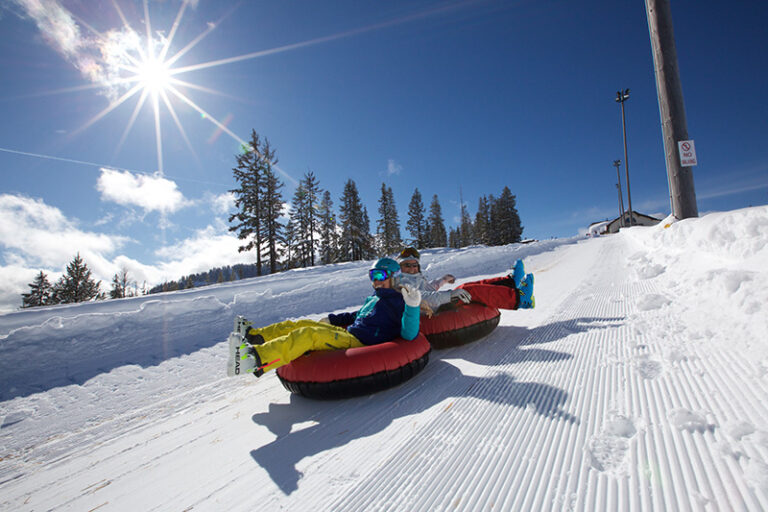Forget Me Not
Jennifer Lowe-anker
Mountaineers Books, 2008, 276 pages
ALEX LOWE DIED in an avalanche on the Himalayan peak Shishapangma in 1999 at the age of 41. The same disaster also took the life of fellow expeditioner and filmmaker David Bridges, but spared Alex’s best friend and notable climbing partner Conrad Anker. Alex left behind three sons, a loving wife, and arguably the greatest climbing career ever. Given that his climbing legacy extended into so many realms and disciplines, many authors wanted to write his life story. But no one was more qualified than his widow, Jennifer Lowe-Anker.
Alex affectionately referred to his wife as Saint Jennie, and Jennifer wisely opted to write a memoir. She takes the good and the bad, the early years and the final years, and splices them with affectionate letters that Alex sent to her from all over the world. The book unfolds with equal parts love story and stunning adventures from the forefront of climbing and mountaineering.
Stewart Alexander Lowe originally hailed from Missoula, Montana. Of course he traveled all over the Northwest, but he predominantly developed his climbing skills in the Rockies while living in Boulder or guiding in the Tetons. Eventually, he held a coveted spot on The North Face Athlete Team, and was often quoted for saying, “The best climber is the one having the most fun!” Although Jennie neglects to summarize his childhood, she does a superb job recounting early dirtbag travels through Europe and the changes they faced after each new son.
Forget Me Not includes the highlights of Alex’s brilliant, world-wide mountaineering resume, his unmatched Utah dawn patrols, and his appetite for punishing workouts interlaced with Jennifer’s firsthand view of his development into an international climbing icon. Paired with some input from Conrad Anker and a forward by Jon Krakauer, Jennifer delivers a candid glimpse into the life of a driving and complicated force that earned uncanny fame for being unstoppable in the mountains.
Jon Jonckers
Kayaking Alone: Nine Hundred Miles From Idaho’s Mountains to the Pacific Ocean
Mike Barenti
University of Nebraska Press, 2008, 230 pages
THREE RIVERS, EIGHT DAMS and decades of political controversy charted Barenti’s 900 – mile course between Redfish Lake and the mouth of the Columbia River. The variety of water he traveled ranged from white water to challenge the hardiest paddler, to flat water reservoirs friendly to the novice and to the white capped waves churned up by the conflict between current and wind in the Columbia gorge. There is something in the narrative to please paddlers of all skill levels. Every outdoor enthusiast will enjoy this story of adventure on one of Americas great river systems.
Kayaking Alone, provides much more than a chronicle of one man’s quest to find adventure on a great river system. Applying his journalistic skills, Barenti weaves conversations with the people he meets, farmers, ranchers, river guides, fisheries biologists, native peoples and dam workers, into a narrative revealing the complex interaction among the economy, the environment and the lives of the inhabitants of the lower Snake and Columbia Rivers.
Many of his conversations eventually got down to salmon. As Barenti notes, “A discussion about salmon is a discussion about economics, politics, biology and philosophy.” Kayaking Alone, leads the reader to realize that one’s philosophy of the human position in nature is as likely to determine ones view of how we treat salmon as the economics, the biology or the politics. Skillfully, Barenti blends facts from biology and economics with keen observations of human nature and political systems arming his readers with the tools necessary for making informed decisions about the future of the Lower Snake/Columbia basin.
Barenti places both his adventure and perspective of wilderness and salmon into the historical context of two centuries of Western European occupation. He looks back to the views of the native North Americans as well. Reading Kayaking means learning about the complex, personal and, emotional conflict that always simmers and some times bubbles to the surface in the Lower Snake/ Columbia basin.
Stan Miller
YEAR OF THE FIRES: THE STORY OF THE GREAT FIRES OF 1910
Stephen J. Pyne
Penguin Books, 2001, 322 pages
THE 1910 FIRE SEASON was the worst in the history of the USFS in terms of both human life and acres burned in the Pacific Northwest. Year of the Fires provides a month by month synopsis of 1910’s changing attitudes toward fire and fire suppression activities; the critical month of August is covered day by day.
Pyne digs beneath the history to reveal the emergence of an attitude toward fire. For the last 100 years total suppression of wildfire has been the goal of forest managers. By the summer of 1910 total suppression was hotly debated. Many who worked in fields associated with the effects of fire were forwarding the idea that fire could be a tool for forest management. The impact of the fires of 1910 on the public tipped the balance in the debate toward total suppression. In light of what was happening in the forest, who could support proscriptive burning? The view of Chief Forester Gifford Pinchot: “The one secret of fighting fires is to discover your fire as soon as possible and fight it as hard as you can and refuse to leave it until the last ember is dead.” became the mantra of the fledgling Forest Service.
Pyne skillfully weaves together the political battle over who should be responsible for fire control in the nation’s Forest Reserves and the debate over how fire should be used in forest management. Would the Department of Agriculture (the USFS), the Department of Interior (the NPS), or the US Army be the nation’s forest wildfire fighter? Pyne attributes the Forest Service’s winning this battle largely due to the publicity given the 1910 fires.
Year of Fires hits many aspects of conservation and forest management in the West. Among them are the politics of the Forest Service’s early years, the debate over the role of fire in forest management and the lore and folklore that grew out of the Great Fires of 1910.
Stan Miller













